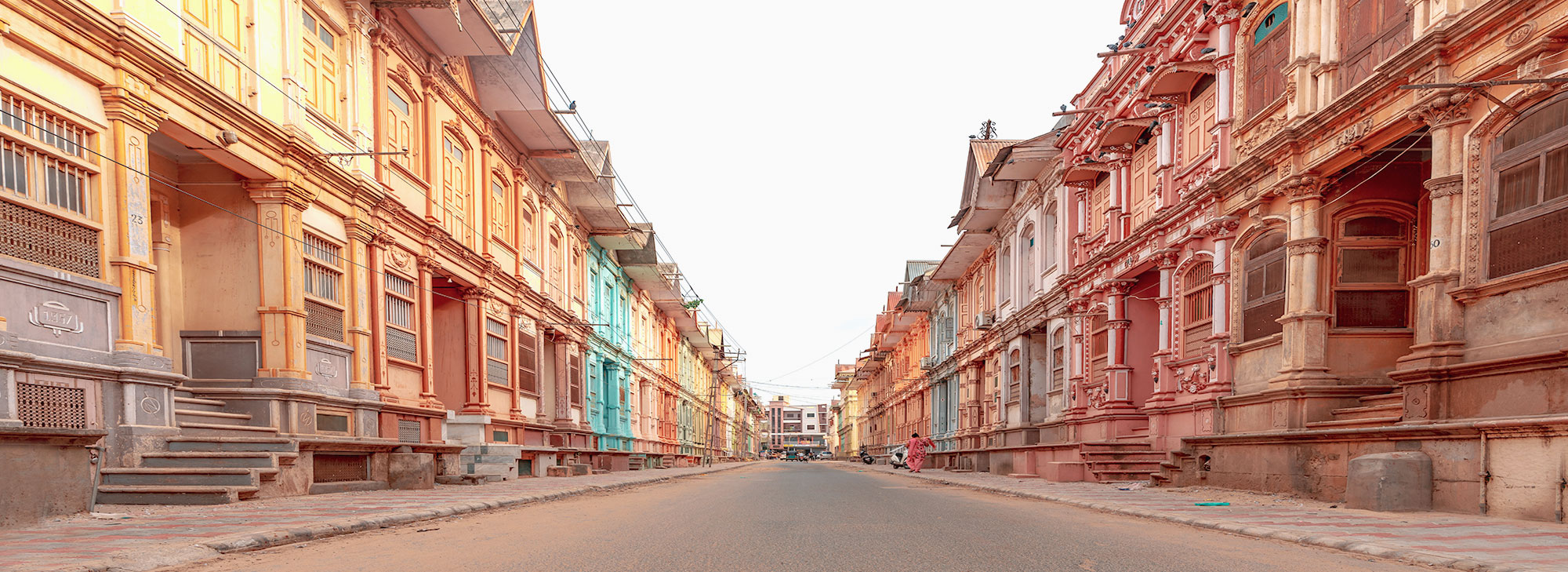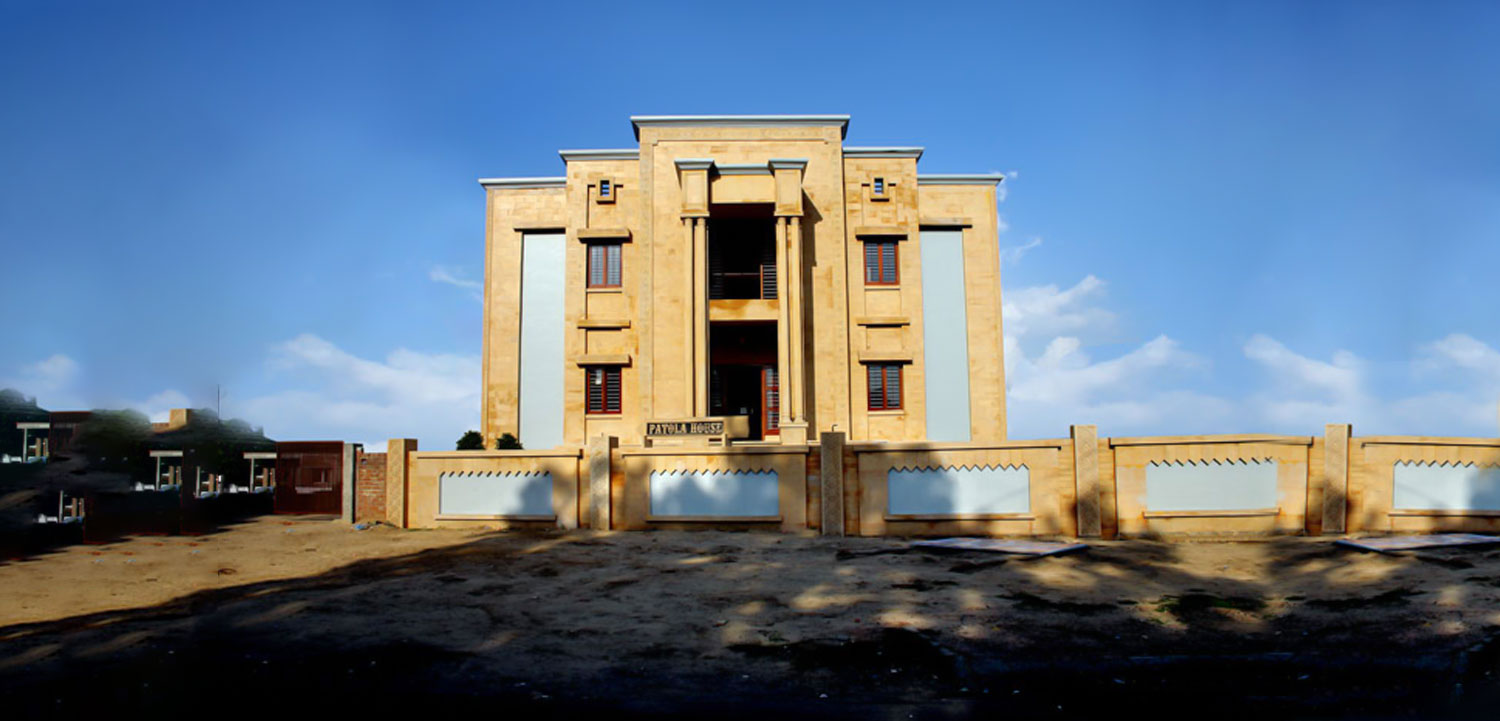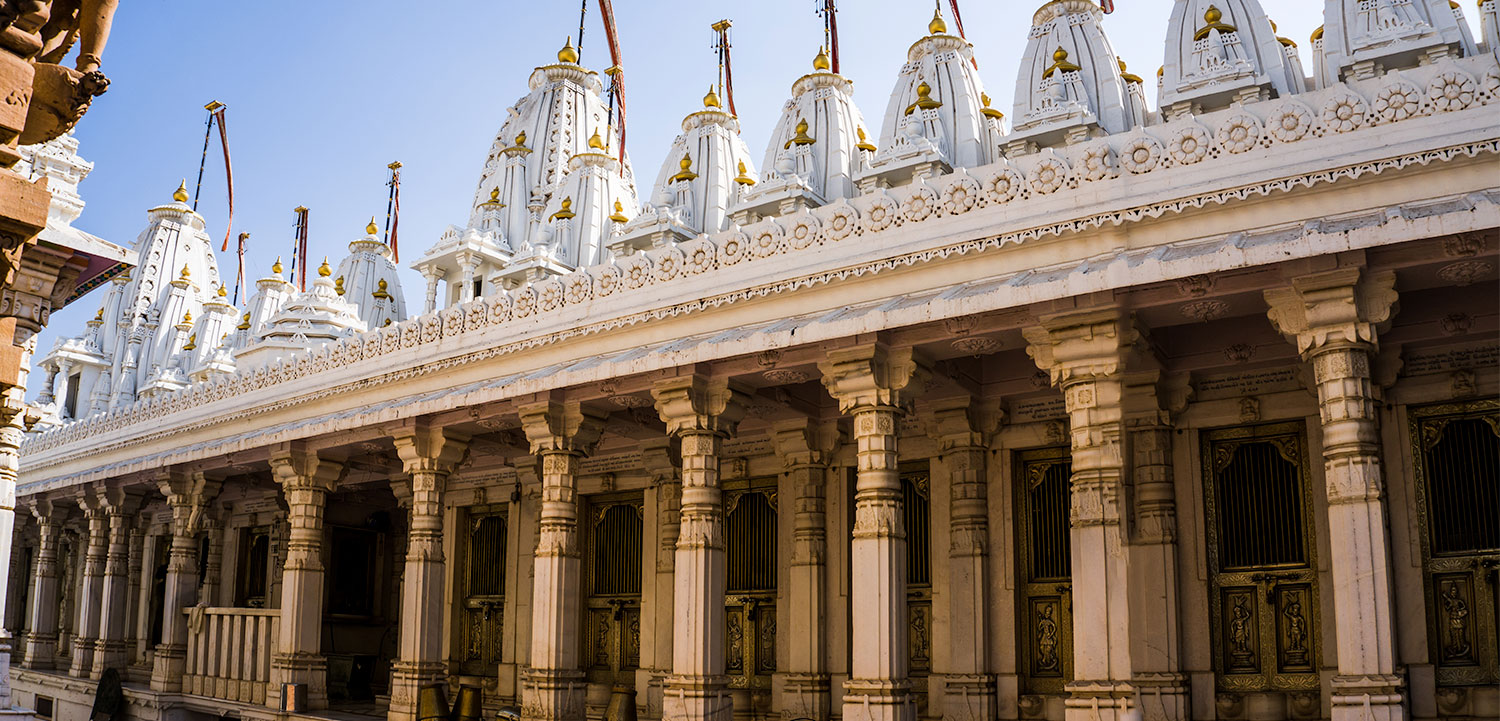Sidhpur is a sacred town, around 103 km north of Ahmedabad. It is situated on the left bank of the River Saraswati, around 24 kms upstream of Anhilwad Patan, the old capital of Gujarat before Ahmedabad was founded in the first quarter of the fifteenth century. The town is a revered destination, flanked by temples, kunds, ashrams and other sacred structures. Around the 10th century, under the Solanki rulers, this town was at the pinnacle of prominence and glory. It derived its name from the great ruler of Gujarat, Siddhraj Jaisinh from the Solanki dynasty.
Raja Siddhraj built a magnificent temple dedicated to Lord Shiva called as the ‘Rudra Mahalaya’ in 12th century AD. The temple was an architectural wonder with a three-storeyed 'shikhara', 1600 pillars, 12 entrance doors, central 'mandapa' and porches on east, north and south and sanctum in west. Around the temple, there were 11 shrines of Rudra. The eastern gate was adorned with beautifully carved 'Toran', with a flight of steps leading to the Saraswati River. The ornamentation of the temple was exuberant as shown by the elaborate and detailed carvings of the pillars and the beautiful Toran, which are the only remains of the temple today.
In Vedas, this modern day Sidhpur is mentioned as ‘Shristhal’ or a ‘pious place’. Of the five most holy and ancient lakes in India is the Bindu Sarovar, which lies here in Siddpur. According to the Hindu religion, it is said that as the obsequies offerings to the paternal ancestors must be made at Gaya, so corresponding offerings to the maternal ancestors have to be performed at Sidhpur. Thus Sidhpur has the importance of ‘Martu Gaya’ or ‘Matru Shraddh’, a place where people come annually to perform the rituals for their mothers who are in heavenly abode. These ceremonies are presided over by the Brahmins, who are treated with high regard. They are performed at Kapilamuni Ashram, where 3 sacred water kunds: the Gyan Vapika, Alpa Sarovar and Bindu Sarovar are present. It is also said that Lord Parshuram performed ‘Matru Shraddh’ at the Bindu Sarovar and his temple is also created here for darshan (worship).
Apart from that, there are only five Swayambhu Lord Shiva temples in India and all of them are in Sidhpur. They are the most important worship places during the Hindu month of Shravan.
Every year the Sidhpur Camel Festival which is a traditional fair is held here during the Kartik month (the first month of the Hindu calendar) from the 11th day to the 15th day which is known as Karthika Poornima (full moon) at the banks of the Sabarmati River. It is a livestock fair in which the locals and tribals from surrounding towns & villages participate. The camels and horses are decorated brilliantly by their owners to display, buy or sell them during the fair. The farmers bring in huge quantity of sugarcanes which is also sold along with various other local handicrafts items. The Kartikeya Temple opens for a week during this fair. All in all, the fair has all the color and vigor of a Gujarati mela.
The town also holds importance for the Bohra Muslims, an affluent Muslim community spread all over the world. They have contributed significantly to the development of Sidhpur. Their old Havelis and mansions, some over 100 years old have a markedly European flavor and a walk through the ‘Bohra Vad’ is like a stroll through an UK replete with the lamp lighters at dusk. So enamored were they by the style & existence of living in the 19th century Europe that as a sign of opulence and to gain respectability amongst the community they tried to create a slice of Europe in their hometown. This, they did by imitating the Victorian architecture. The facades are rich in variety and aesthetic expression with intricate details in wood. Thus the living spaces of the Bohra community or the so-called ‘Bohra Havelis’ represent a nostalgic visual straight out of a Dickenson novel.
The wealthy Bohra built these Victorian mansions in the late 19th-early 20th centuries to emulate the style and existence of living in Europe. Walking down the street with Victorians painted in pastel hues on both sides, one feels as if one has been dropped into UK or on a movie set. The gorgeous facades all have intricate, wood details and each house expressed the owner’s creativity; painted in shades of lime green, pale pink, lilac, mandarin orange, and white.
How to get there
-
 By Road
Intercity buses from Ahmedabad to Patan take 3.5 hours and 1 hour from Mehsana. Shared jeeps are slightly quicker, but less comfortable.
By Road
Intercity buses from Ahmedabad to Patan take 3.5 hours and 1 hour from Mehsana. Shared jeeps are slightly quicker, but less comfortable.
-
 By Train
The train can take you as far as Mehsana (1 hour). From there you will need to catch a bus to Patan.
By Train
The train can take you as far as Mehsana (1 hour). From there you will need to catch a bus to Patan.
-
 By Air
The nearest airport from Patan is Ahmedabad, situated at a distance of 125 km. The airport here, in turn is connected to International and Indian cities. Patan has a railway station for easy access.
By Air
The nearest airport from Patan is Ahmedabad, situated at a distance of 125 km. The airport here, in turn is connected to International and Indian cities. Patan has a railway station for easy access.
Where To Stay
Register Tour Operators
A to Z Holidays
| Phone | 079 – 40020240 |
| Mobile | 09879 242752 |
| Website | http://www.atozholidays.in |
Flamingo Travels Private Limited
| Mobile | 9327015360 |
| Website | http://www.flamingotravels.co.in |





.jpg)
